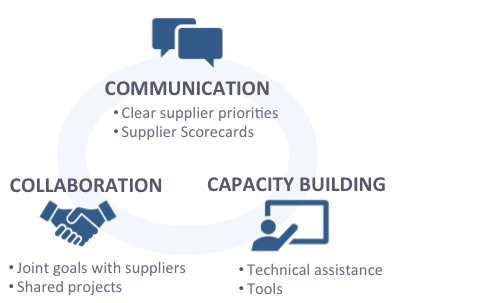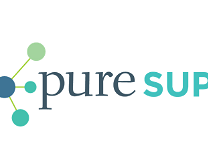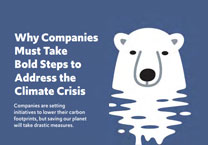Building effective clean label strategies through the supply chain
by Tim Greiner
11 October 2017
Consumers increasingly seek to be informed on what they eat. This quest has led to the growth of ‘real food’ made of ingredients the consumer recognizes and can understand. Eschewing artificial ingredients or complex synthetic additives, these consumers look to food companies to be transparent about what is in their food and its source, seeking to find brands they trust.
“Consumers’ relationship with food is fundamentally changing,” said Laura Renaud, associate manager of corporate communications for Hershey, during an interview with Food Business News. “They want to know and recognize the ingredients in their products, but beyond that, they also want to know how we’re sourcing our ingredients, so sustainability efforts are very important as well.”
Tackling this demand through the supply chain comes with challenges including the lack of a simple definition for conveying requirements up the value chain. This makes it difficult to align expectations and requirements. The strategy a company deploys to align its product development, quality, safety units and how it engages externally with suppliers is critical to driving clean label projects across the business.
Start at the Top with a Clear Policy
It is critical that leadership is engaged across the business. Panera CEO Ron Shaich was famously out in front in his company’s drive towards clean label, headlining press releases and providing regular updates to the market. Such visible leadership is also invaluable internally to keep momentum up in what can be a highly technical and resource intensive process.
To gain such leadership support often requires a corporate policy. As a result, setting the right policy is one of the first challenges companies face. Will we have a “no-no” list that we apply across the business? Or will we selectively go after certain ingredients in a smaller set of items? Caribou Coffee, the first coffee company to publicly announce a clean label strategy chose to target artificial colors, dyes, preservatives and other ingredients in drinks with a goal of 100% clean label drinks by 2018.
Setting a public goal may not be right for every company. Some companies have avoided public proclamations for example, and instead focused on quietly developing clean label formulations for categories where consumer is mostly likely to expect it –such as, salad dressing and ketchup, as opposed to candy. Further, with a few years under its belt, there are enough clean label products on the market today to help firms identify potential substitutes for many ingredients found in food and home/personal care products. As a result, benchmarking helps a company quickly determine where substitutes are possible and if where there are ingredients with few substitutions on the market and innovation efforts may be required.
However, the key to achieving clean label goals is working effectively with suppliers. Our work with leading brands shows three keys to success when engaging suppliers on the clean label journey: communication, collaboration, and capacity building.
Keys to Effective Supply Chain Engagement
Communication with suppliers in a critical step in the process – so establishing a working definition for clean label is an important first step on the journey. This means understanding how your customer and end consumer defines it – whether it is no artificial flavors or colors, eliminating undesirables such as gluten, high fructose corn syrup or saturated fats, incorporating healthy ingredients such as acai berry, or sourcing sustainably. Communicating your priorities to suppliers with clear priorities is important. Many companies start with a list of banned ingredients.

Many firms find collaboration a critical component of their success working with suppliers. Your Quality Assurance (QA) team may need to oversee and work with suppliers to review shelf life testing methods and results. QA teams may also need to collaborate with vendors on developing new product specifications. And food sourcing teams may want to do field testing side by side with your vendors to ensure the new formulations meet your requirements. There may be pockets where additional effort is needed, such as with niche or unique ingredients. Brand owners and manufactures must be willing to invest in such value-added ingredients and work with suppliers to integrate them into their offerings.
As Stacey Fowler, senior vice-president of product innovation and new venture development for Schwan Food notes that collaboration with ingredient suppliers has been key for her company. “We try to have strategic relationships, as we think about knowledge and the application of ingredients…Sometimes they are not 1 for 1 and then we have to work the equation through the test and design process”, says Fowler.
Capacity building is often the last link in the chain, particularly when it comes to small suppliers. Some firms form internal teams to work with suppliers to share technical knowledge. This could include coaching on how vendors might build their own R&D capabilities and advising them on resources such as ingredient suppliers or outside labs to validate ingredient quality and safety.
The Clean Label movement signals the need for greater transparency throughout the value chain. Beyond the need to provide easy to read natural ingredients, it represents a fundamental shift consumers are taking towards brands that are addressing social and environmental impacts. Clean Label efforts provide food manufactures and brands an opportunity to engage their supply chains and at the same time gain consumer trust and build healthier and more sustainable products.
Written by Tim Greiner
Tim Greiner, a Pure Strategies Co-founder and Managing Director, has pioneered approaches to building environmental and social integrity into products, brands, and businesses. He is also a co-founder of the Chemical Footprint Project and has guided sustainable chemicals management strategies for companies across diverse industries. His experience spans the spectrum from developing sustainability strategy, drafting sustainability goals, designing product sustainability programs, creating approaches to transform sustainable supply chains and facilitating a landscape level stakeholder process to improve climate and water quality outcomes.
Tim's recent projects include helping build a leading climate strategy for Ben & Jerry's, developing sustainability goals for King Arthur Baking, creating a corporate sustainability strategy for Lush, and developing a regenerative grazing standard for Timberland.












